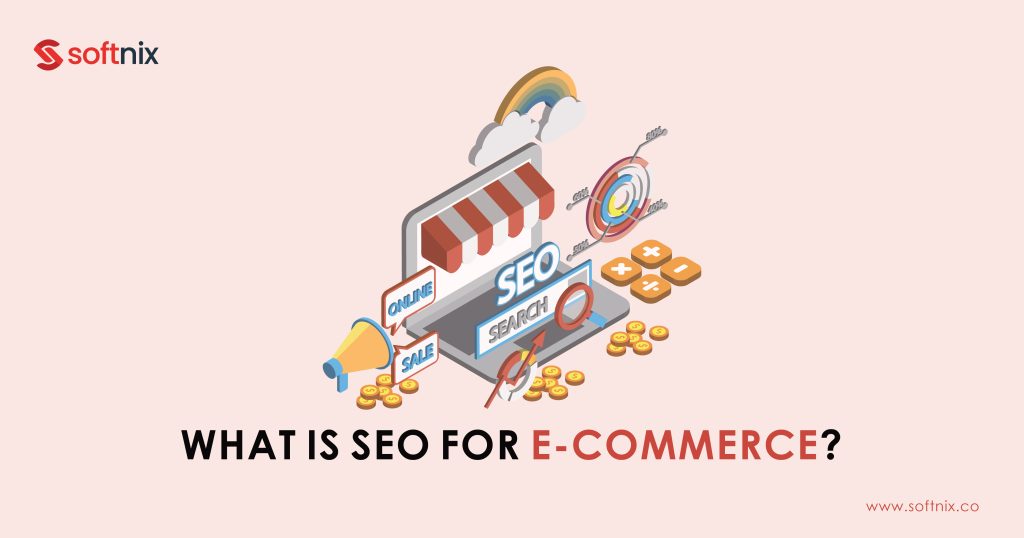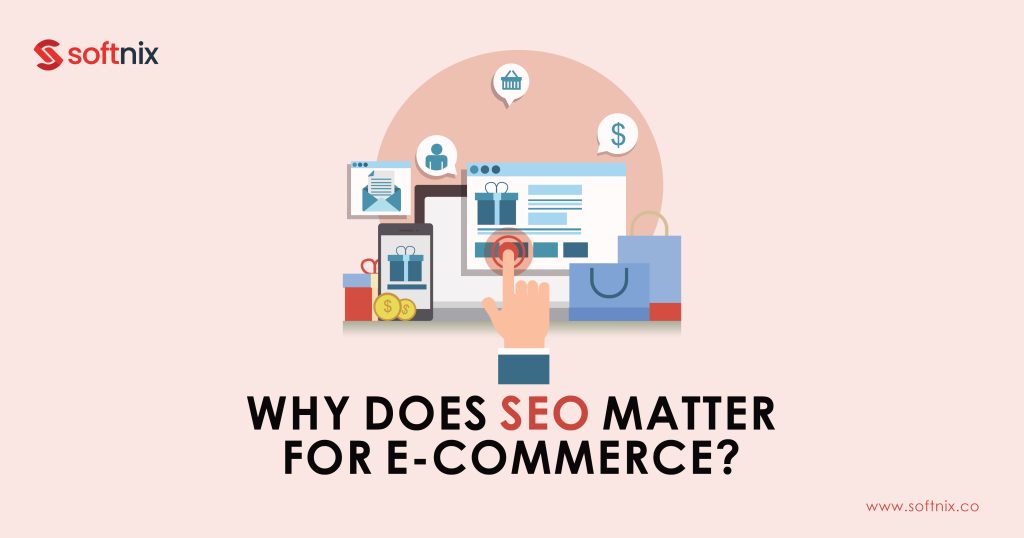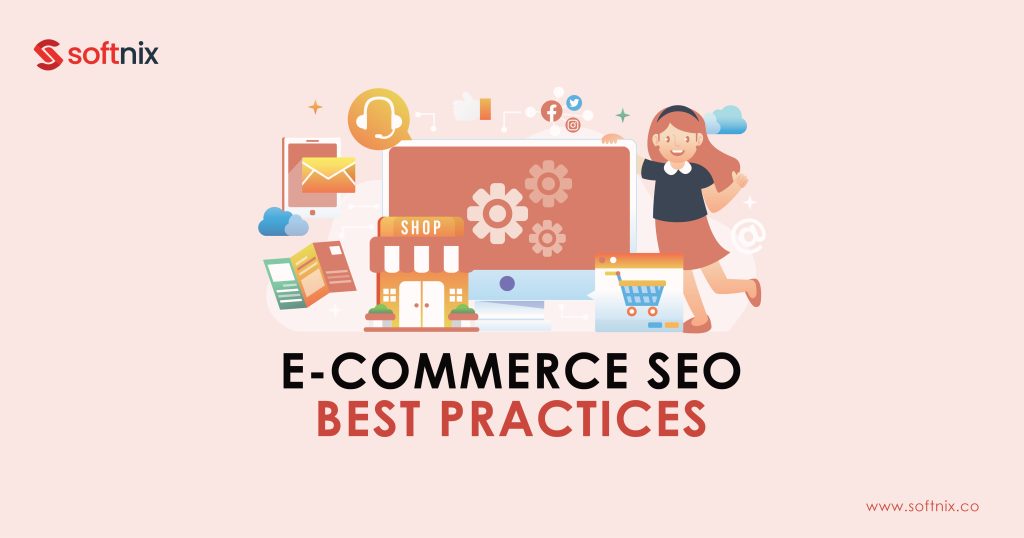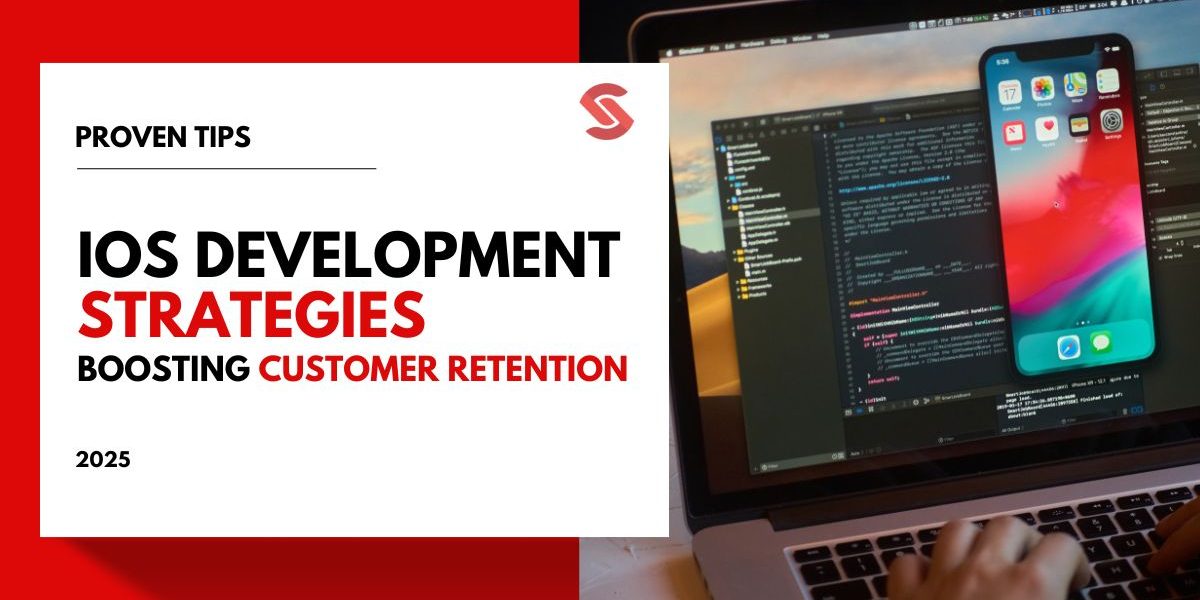Feeling lost in a sea of online stores? You’re not alone. Over 75% of e-commerce stores report struggling with search engine visibility. It’s tough to get your shop noticed with all the competition out there. But don’t worry, we’re here to help!
This guide is your roadmap to e-commerce success. We’ll equip you with the SEO know-how to boost your visibility, attract more customers, and skyrocket your sales. From nailing those crucial keywords to optimizing your website for speed, we’ll cover everything you need to dominate search results.
Let’s get started and turn your online store into a shopping destination!
What Is SEO for E-Commerce?

SEO for e-commerce is all about making your online store more visible on search engines like Google. Think of it as a way to help customers find your products easier. Unlike regular SEO, e-commerce SEO focuses on product descriptions, category pages, and customer reviews. It’s about using the right keywords that shoppers are searching for and making sure your site loads fast. Good SEO services for e-commerce can boost your store’s visibility, bringing in more traffic and sales.
Why Does SEO Matter for E-Commerce?

SEO matters for e-commerce because it boosts your store’s visibility in search engines, making it easier for customers to find your products. Better rankings lead to more organic traffic, which translates to more potential sales. Following a business guide for SEO services ensures a comprehensive and effective approach.
As Ahrefs founder, Tim Soulo, emphasizes, “SEO is the foundation of any successful online business.“ By optimizing your website for relevant keywords, you can attract potential customers actively searching for your products or services. This increased visibility and targeted traffic can significantly boost your sales and overall business growth.
Increased Visibility and Organic Traffic
SEO boosts an e-commerce site’s visibility in search engine results, leading to more organic traffic and potential sales. When your store ranks higher, more people see it. This increased visibility translates to more clicks and visits. With better search rankings, your site gets a significant traffic boost, making it easier for customers to find and buy your products.
Cost-Effectiveness Compared to Paid Advertising
SEO is a cost-effective marketing strategy for e-commerce. Unlike PPC, which requires ongoing payments, SEO focuses on organic search, providing long-term benefits. Investing in SEO leads to lower marketing costs and a better ROI. It’s economical and efficient, allowing you to allocate your marketing budget wisely while achieving sustained growth and increased profits over time.
Comparison Between SEO and PPC for E-Commerce
This table highlights the key differences between SEO and PPC for the e-commerce industry, focusing on costs, traffic, time to see results, trust, CTR, long-term ROI, targeting options, and control over content.
| Aspect | SEO | PPC |
|---|---|---|
| Cost | Organic; no direct cost per click | Paid; cost per click (CPC) |
| Traffic | Generates organic traffic | Generates paid traffic |
| Time to See Results | Takes time (months) to see significant results | Immediate results once the campaign is live |
| Trust and Credibility | Higher trust and credibility due to organic ranking | Lower trust as it’s marked as an ad |
| Click-Through Rate (CTR) | Usually lower than PPC initially | Higher CTR initially |
| Long-term ROI | Higher long-term ROI | Lower long-term ROI due to ongoing costs |
| Targeting Options | Limited to search engine algorithms | Highly customizable targeting options |
| Control over Content | Full control over content and on-site optimizations | Limited control as content must comply with ad platform policies |
Enhanced User Experience and Site Usability
SEO improves user experience and site usability by implementing best practices like fast load times, mobile-friendliness, and easy navigation. A user-friendly design keeps visitors happy and engaged. According to Think with Google, 53% of mobile users leave a site that takes longer than 3 seconds to load. Enhancing user experience through SEO leads to better user satisfaction, making visitors more likely to convert into customers.
E-Commerce SEO Best Practices

Want more people to find your online store? These SEO tips will help. We’ll explain the key steps to make your site rank higher on search engines, bring in more visitors, and boost sales. Follow these best practices to improve your e-commerce site and stay ahead of your competition.
Keyword Research and Optimization
Find the right keywords to boost your e-commerce site. Look for high-value keywords with good search volume and low competition. Focus on what buyers are searching for. Use these keywords on your product pages and descriptions to improve your search engine rankings. This helps drive more traffic, attract potential customers, and increase sales for your online store.
1. Conducting Effective Keyword Research for E-Commerce
Finding the right keywords is key to e-commerce success. Start by understanding what your customers search for. Use keyword tools to discover popular search terms. Analyze competitors to see which keywords they rank for. Focus on search intent to match what buyers want.
These steps help you pick keywords that drive traffic and sales. Effective keyword research involves regular updates. Trends change, and new keywords emerge. Keep your list fresh by revisiting your research often. This ensures your e-commerce site stays relevant and competitive.
2. Best Tools for E-Commerce Keyword Research
Using the right tools makes keyword research easier and more effective. Some top tools include:
- Ahrefs: Great for competitor analysis and finding high-value keywords.
- SEMrush: Offers a wide range of SEO tools, including keyword research and tracking.
- Google Keyword Planner: Free tool to discover keywords and estimate search volume.
These tools provide valuable insights and help you find the best keywords for your e-commerce site, boosting visibility and traffic. Using them regularly keeps your keyword strategy up-to-date and effective.
3. Optimizing Product Descriptions and Titles
Crafting good product descriptions and titles can boost your search rankings. Use keywords naturally in your titles and descriptions. Make them engaging and informative. Did you know that 50% of online shoppers rely on product descriptions to decide on a purchase? – eMarketer.
Well-written descriptions attract more buyers and improve your SEO. Keep them clear and concise, highlighting key features and benefits.
4. Utilizing Long-Tail Keywords
Long-tail keywords are longer and more specific. They attract targeted traffic to your e-commerce site. Find these keywords by thinking about detailed search queries your customers might use. Incorporate them into your content to capture niche markets.
Using long-tail keywords helps you rank for less competitive terms. This can drive quality traffic that is more likely to convert into sales.
5. Leveraging Buyer Intent Keywords
Buyer intent keywords are essential for conversion. They show what stage a customer is at in their buying journey. Differentiate between informational and transactional keywords. For example, “best running shoes” vs. “buy running shoes online.”
Using buyer intent keywords boosts conversions. HubSpot states that using transactional keywords can increase conversion rates by up to 15%. Focus on these keywords to optimize product pages and drive sales.
On-Page SEO
E-commerce websites can improve their search rankings by focusing on key page elements. This includes optimizing titles, descriptions, headings, and content with relevant keywords. These changes help search engines understand what products a store offers. Better understanding leads to higher rankings, making it easier for shoppers to find the site. When done right, these tweaks attract more customers and boost sales. It’s all about making web pages clear and useful for both search engines and potential buyers.
1. Optimizing Product Pages
Optimizing product pages is important for e-commerce success. Focus on clear, keyword-rich titles and detailed descriptions to help search engines understand your content. Use high-quality images with descriptive alt texts. Internal linking guides visitors to related products, improving user experience and SEO. According to a study by Baymard Institute, 69% of users rely on product descriptions when making purchase decisions. This shows how important well-crafted content is for both SEO and sales.
2. Enhancing Category Pages
Category pages need clear organization and optimization to boost SEO and user experience. Structure your pages with a logical hierarchy and keyword-rich headings. Use concise, informative descriptions for each category. A well-organized page helps users find products easily and improves search engine rankings. Effective category pages can significantly enhance your site’s navigation and visibility.
3. Creating SEO-Friendly URLs
Creating clean, descriptive URLs improves search engine rankings. Follow these best practices:
- Keep URLs short and simple.
- Use keywords relevant to the page content.
- Avoid using numbers or special characters.
- Use lowercase letters
- Remove unnecessary words like “and” or “the”.
- Use hyphens to separate words.
Following these rules makes your URLs easier for people and search engines to read and understand. This can help improve your search rankings and make your site more user-friendly.
4. Implementing Structured Data Markup
Structured data markup helps search engines understand your website better. It’s like giving them extra information about your products, prices, and reviews. This can lead to richer search results, showing stars, prices, or availability right in the search listings.
Using structured data can make your site stand out in search results. This might lead to more clicks and visits. Google reports that pages with schema markup rank an average of four positions higher in search results than those without.
Technical SEO
Making your online store work well behind the scenes is key to success; that’s where Technical SEO steps in. It simply means ensuring your website loads fast, works great on phones, and gives search engines clear information about your products. Better rankings mean more shoppers find your store. It’s like tuning up a car – when everything runs smoothly, you go further and faster.
1. Ensuring Site Speed and Performance
Fast websites make customers happy and search engines like Google rank them better. Slow sites frustrate shoppers, who often leave without buying. To speed up your site, use smaller images, remove unnecessary code, and choose a good web host.
Check your site’s speed regularly and fix any problems. Remember, even a one-second delay can reduce sales. A fast site keeps customers browsing and buying, which is good for your business and search rankings.
2. Mobile Optimization
More people shop on phones than computers now. Your online store must work well on all devices. Here are some ways to make your site mobile-friendly:
- Use a responsive design that adjusts to screen size
- Make buttons and links easy to tap
- Use large, readable text
- Simplify your menu for small screens
- Ensure images and videos load quickly on mobile
These changes make shopping easier for mobile users. Happy mobile shoppers are more likely to buy and return to your store. Google also ranks mobile-friendly sites higher in search results.
3. Managing Site Architecture and Crawlability
Your website’s structure helps search engines understand and list your pages. A clear structure makes it easy for both shoppers and search engines to find products. Use categories and subcategories to organize your products logically.
Create a sitemap to guide search engines through your site. Link related products and categories to help customers and search engines explore your store. A well-organized site improves your search rankings and helps customers find what they want quickly.
4. Handling Duplicate Content
Duplicate content can hurt your online store’s search rankings. This happens when the same text appears on different pages of your site. Search engines need clarification about which page to show in the results. To fix this, use unique descriptions for each product and avoid copying text across pages.
A study by Raven Tools found that 29% of websites have duplicate content issues. This shows how common the problem is. By fixing duplicate content, you can improve your site’s visibility in search results and attract more customers.
5. Secure Website (HTTPS)
HTTPS makes your online store secure for shoppers. It protects their personal information when they buy from you. Search engines also prefer secure sites and rank them higher. Here are some steps to secure your e-commerce website:
- Install an SSL certificate
- Update your site to use HTTPS
- Set up automatic redirects from HTTP to HTTPS
- Update internal links to use HTTPS
- Check for mixed content issues
These steps help build trust with customers and search engines. A secure site encourages shoppers to buy from you and can boost your search rankings.
6. Improving Site Speed for Better SEO on E-Commerce Websites
Fast-loading pages keep shoppers happy and help your store rank better in search results. Slow sites often lose customers before they even see the products. To speed up your site, compress images, use caching, and remove unnecessary plugins or scripts.
Test your site speed regularly using tools like Google PageSpeed Insights. Make changes based on the results. Remember, even small speed improvements can lead to more sales and better search rankings.
7. Managing Crawl Budget for Large E-Commerce Websites
Crawl budget refers to how often and how many pages search engines look at on your site. For big online stores with lots of pages, managing this budget is important. If you want search engines to focus on your most important pages. Optimize by improving site structure, using robots.txt to prioritize pages, and fixing crawl errors promptly. This ensures search engines index your important pages efficiently, boosting SEO performance.
8. Ensuring Mobile-Friendliness for E-Commerce SEO Success
Mobile-friendly design is a must for online stores. More people shop on phones than computers now. Search engines also consider mobile-friendliness when ranking sites. Here are some best practices:
- Use responsive design so your site adjusts to different screen sizes.
- Test your site on various devices to ensure easy browsing and buying.
- A mobile-friendly store can lead to more sales and better search rankings.
- Make sure your store looks good and works well on all devices, especially smartphones.
Content Marketing
Creating helpful content for your online store attracts more customers and boosts your search rankings. This includes writing blog posts, product guides, and customer stories. Many businesses utilize content writing services to consistently produce high-quality material. Good content answers shoppers’ questions and highlights the value of your products. It provides search engines with relevant content to display in results. By sharing valuable information, you build trust with both customers and search engines, leading to increased sales and improved online visibility.
1. Creating Engaging Product Descriptions
Good product descriptions sell items and help your store show up in search results. Use clear, exciting words to explain what makes your products special. Include important details like size, color, and features. Add keywords people might use when searching for your products.
A study by Nielsen Norman Group found that 20% of purchase failures happen when product descriptions lack details. This shows how important good descriptions are. By writing clear, helpful descriptions, you can increase sales and improve your search rankings.
2. Developing a Blog for Your E-commerce Site
Writing blogs for your online store can bring in more customers. Blogs let you share helpful information about your products and industry. This keeps people coming back to your site and helps search engines find you. Write about topics your customers care about, like how to use your products or industry news.
Regular blog posts give search engines fresh content to index. This can improve your site’s ranking for important keywords. Blogs also let you target long-tail keywords, which are specific phrases people search for. These often lead to more sales.
3. Leveraging User-Generated Content
Customer reviews and feedback make your store more trustworthy. They also help with search rankings. Here are some ways to get more customer reviews:
- Send follow-up emails asking for reviews after the purchase
- Make leaving reviews easy on your site
- Offer small incentives for honest feedback
- Respond to reviews, both good and bad
- Share positive reviews on your product pages and social media
These steps encourage customers to share their experiences. More reviews mean more content for search engines and more trust from potential buyers. Remember, authentic reviews are best, so never fake them or offer big rewards for positive ones.
4. Content Strategy for Seasonal and Promotional Campaigns
Seasonal content helps online stores attract customers during specific times of the year. Plan your content around holidays, seasons, and special events. Create gift guides, holiday recipes, or seasonal how-to articles. Use keywords related to these events in your content.
Update your website design and product pages to match the season. This keeps your store fresh and exciting for shoppers. Remember to start planning and creating seasonal content early to be ready when customers start searching.
5. Developing a Content Marketing Strategy for E-Commerce
A good content plan helps online stores attract and keep customers. Here are some steps to create an effective content strategy:
- Know your target audience and what they want
- Set clear goals for your content
- Choose the types of content you’ll create (blogs, videos, etc.)
- Plan when and where you’ll share your content
- Measure how well your content performs
Following these steps helps you create content that interests customers and helps your store show up in search results. Remember to adjust your plan based on what works best for your store.
6. Types of Content that Boost SEO for E-Commerce Websites
Different types of content can help your online store appear in search results. This variety of content also gives search engines more reasons to show your store in results. Mix these content types to keep your site interesting and helpful. Here are the types of content that boost the SEO of your store:
- Blog Posts: Informative articles that address customer queries, industry trends, and product updates.
- Product Descriptions: Detailed and optimized descriptions that incorporate relevant keywords.
- Video Content: Engaging product demonstrations, tutorials, and customer testimonials.
- Infographics: Visual representations of data and product features for easy consumption.
- User-generated Content: Reviews, testimonials, and social media posts that build trust and authenticity.
7. Using Blog Posts to Drive Traffic to E-commerce Sites
Blog posts bring more visitors to online stores. They answer questions people search for online. A study by HubSpot found that businesses with blogs get 55% more website visitors than those without. Write about topics related to your products and industry.
Use keywords in your blog posts that people might search for. Share your posts on social media to reach more people. Regular blogging keeps your site fresh and helps it rank better in search results.
8. Creating High-Quality Product Guides and Reviews
Writing detailed product guides and reviews enhances SEO by providing valuable information and improving user experience. These comprehensive resources not only educate potential buyers but also influence purchasing decisions. Businesses can increase organic traffic and drive conversions effectively by focusing on effective content marketing strategies for businesses, such as detailed guides and reviews.
Link Building
Getting other websites to link to your online store helps it rank better in search results. This process involves creating great content that others want to share and building relationships with other sites in your industry. Good links act like votes of confidence for your store. You can also link between pages on your site to help customers and search engines find important information.
1. Building High-Quality Backlinks
Getting good websites to link to your online store boosts your search rankings. These links show search engines that your site is trustworthy and valuable. Here are some ways to get high-quality backlinks:
- Create great content others want to share
- Reach out to industry websites and offer to write for them
- Participate in industry events and get mentioned on their sites
- Fix broken links on other sites with links to your content
- Get listed in relevant online directories
Remember, focus on quality over quantity. A few links from respected sites in your industry are worth more than many from unknown sites.
2. Leveraging Influencer Partnerships
Working with popular social media users, called influencers, can help your online store. They can share links to your products with their followers. This brings more people to your site and can improve your search rankings. A study by Influencer Marketing Hub found that businesses earn $5.20 for every $1 spent on influencer marketing. Choose influencers whose followers match your target customers for the best results.
3. Utilizing Internal Linking
Internal linking is crucial in SEO by improving site structure and guiding users through your content. By strategically placing internal links within your website, you can boost the visibility of important pages, distribute link equity, and enhance user experience. This SEO tactic helps search engines crawl and index your site more effectively, leading to improved rankings and increased organic traffic
4. Local Link-Building Strategies
Local links help your store show up in searches for your area. This matters if you have a physical store or want to target local customers online. Join local business groups and get listed on their websites. Sponsor local events to get mentioned on event pages.
Work with other local businesses to promote each other. Get listed in local online directories. Write about local topics on your blog to attract links from local news sites. These local links tell search engines your store is important in your area.
5. Effective Link Building Strategies for E-Commerce Websites
Online stores need good links from other websites to rank well in search results. These links act like votes of confidence for your store. Here are some effective ways to build links for e-commerce websites:
- Create helpful content that others want to share
- Reach out to industry websites and offer to write for them
- Partner with influencers in your niche
- Get listed in relevant online directories
- Participate in industry events and get mentioned on their site
Focus on getting links from sites related to your products or industry. Quality matters more than quantity. A few links from respected sites help more than many links from unknown sites.
6. Earning Backlinks for E-Commerce Product Pages
Getting links to product pages helps them show up in search results. Make your product pages interesting and useful. Add detailed descriptions, high-quality images, and customer reviews. Create guides or videos that show how to use your products.
Share your product pages on social media. Reach out to bloggers or reviewers who might be interested in your products. Offer to send samples in exchange for honest reviews and links. Remember, the goal is to create pages people want to link to naturally.
7. Partnering with Influencers for Link Building
Collaborating with influencers is a strategic approach to gaining high-quality backlinks and expanding your e-commerce site’s reach. Identify influencers whose audience aligns with your target market, develop meaningful partnerships, and create content collaborations that include backlinks to your site. Influencer endorsements not only drive traffic but also enhance your site’s authority and credibility in your industry.
8. Utilizing PR for E-Commerce SEO Success
Public relations (PR) can help your online store get noticed and earn links. Share interesting stories about your business or products with news websites and blogs. Create press releases for new product launches or company milestones. Offer expert opinions on industry topics to get quoted in articles. Good PR can lead to mentions and links from high-authority news sites, which greatly boost your search rankings. Always focus on creating genuinely newsworthy content for the best results.
Mobile SEO
In optimizing e-commerce sites for mobile search, mobile SEO focuses on ensuring websites are easily usable and fast-loading on mobile devices. Strategies include responsive design, which adapts site layout to different screen sizes, and implementing AMP to improve page loading speed. These enhancements not only boost user experience but also improve search engine rankings for mobile searches.
1. Optimizing E-Commerce Sites for Mobile SEO
Making your online store work well on phones is key to success. More people shop on phones than computers now. Ensure your site loads fast on mobile devices. Use big, easy-to-tap buttons and clear text. Make sure images look good on small screens. Test your site on different phones to catch any problems.
A mobile-friendly site ranks better in search results. Google looks at how well your site works on phones when deciding where to show it in searches. This means a good mobile site can bring more customers to your store.
2. Best Mobile SEO Practices for E-Commerce Websites
It is important to optimize your e-commerce store as most of the users are those who browse through mobile. Follow these best practices to make your online store great on mobile devices:
- Use a responsive design that adjusts to screen size
- Make sure pages load fast
- Use large, easy-to-tap buttons
- Keep menus simple and easy to use
- Use readable fonts and good contrast
- Optimize images for quick loading
- Make forms easy to fill out on phones
These steps help customers use your site easily on phones. They also help your store rank better in mobile search results. Remember, a good mobile experience keeps customers happy and coming back.
3. Mobile Usability’s Impact on E-Commerce SEO
How well your site works on phones affects its search rankings. If customers find your site hard to use on their phones, they’ll leave quickly. This tells search engines your site isn’t helpful. Make sure customers can easily browse products, read information, and buy items on their phones.
Test your site regularly on different devices. Ask friends or family to try using your site on their phones and give feedback because a site that’s easy to use on phones keeps customers happy and helps your store show up in more searches.
4. Accelerated Mobile Pages (AMP) for E-Commerce
Accelerated Mobile Pages (AMP) make websites super-fast on phones. They’re special versions of your pages that load almost instantly. This speed makes customers happy and can help your store rank better in search results. AMP pages often show up in special sections of Google search results.
A study shows that AMP pages load 4 times faster and use 10 times less data than non-AMP pages. This means customers can browse your store quickly even with slow internet. Fast-loading pages keep customers browsing and buying instead of leaving because of slow speeds.
5. Enhancing Mobile Checkout Experience for Better SEO
Making buying easy on phones helps both customers and search rankings. Use a simple checkout process with a few steps. Make forms easy to fill out on small screens. Offer guest checkout so customers don’t have to create accounts. Make sure your site is secure and shows security badges. Test your checkout process on different phones. Fix any issues that make it hard to buy. A smooth checkout keeps customers happy and increases sales. It also reduces cart abandonment, which can improve your site’s overall performance in search rankings.
Local SEO
Enhance local search visibility for your e-commerce business by optimizing Google My Business, building local citations, and creating localized content. These strategies ensure your business appears prominently in local searches, attracting more local customers and increasing visibility in your target areas. Strengthening local SEO boosts your e-commerce site’s visibility and connects you with nearby potential customers.
6. Optimizing for Local Search
Optimizing an e-commerce site for local search involves using local keywords, ensuring accurate NAP (Name, Address, Phone number) data, and creating location-specific content. These strategies boost local visibility and attract nearby customers, driving more foot traffic and local sales. According to Google, 46% of all searches have local intent, making local SEO crucial.
7. Google My Business Optimization
Google My Business is a free tool that helps your store show up in local searches. Fill out your profile completely with your business name, address, and phone number. Add photos of your store and products. Keep your hours updated, especially during holidays. Respond to customer reviews on your Google My Business page. This shows you care about customer feedback. Post updates about sales or new products regularly. These steps help your store appear in local search results and on Google Maps.
8. Creating Localized Content
Create content that talks about your local area. Write blog posts about local events or how your products relate to local life to create a strong relationship between you and your local users. Use local keywords naturally in your content.
This helps your store show up when people search for products in your area. Share local content on social media too. This can attract more local customers to your site. Good content helps both local and wider audiences find your store.
9. Building Local Citations
Local citations, such as listings on local directories and review sites, are essential for local SEO. They improve your business’s visibility and credibility. Ensure consistent NAP information across all platforms. Building and maintaining local citations helps enhance your local presence, driving more local traffic and improving search engine rankings.
10. Implementing Local SEO for E-Commerce Businesses
Creating local SEO strategies involves optimizing your website, creating local content, and managing online reviews. Use local keywords, ensure your site is mobile-friendly, and leverage local backlinks. These comprehensive strategies improve local visibility, helping e-commerce businesses attract more local customers and drive sales through enhanced local search performance.
11. Benefits of Local SEO for Online Stores
Local SEO brings many benefits to online stores. Local SEO is especially helpful for small businesses competing with larger online stores. These benefits can lead to more sales and happy local customers. Here’s how it can help your business:
- Attracts nearby customers who are ready to buy
- Makes your store show up in Google Maps
- Helps you compete with bigger online stores
- Builds trust with local customers
- Improves your visibility in local search results
- This can lead to more in-store visits if you have a physical shop
User Experience (UX) and Conversion Rate Optimization (CRO)
Improving UX and CRO is all you need for your e-commerce success. Because it helps your users to stay on your site and reduce bounce rate. Focus on enhancing site navigation, optimizing the checkout process, and using personalization techniques to engage users. A user-focused approach boosts engagement and conversion rates, turning visitors into customers. Optimized UX and CRO lead to increased sales and a better overall shopping experience.
1. Improving Site Navigation and Structure
Enhancing site navigation and structure is key for better UX and SEO. Use clear menus, logical categories, and consistent layouts to make it easy for users to find what they need. Engaging UI UX services ensures that these design principles are effectively applied to your site. These improvements boost user engagement and help search engines crawl your site more effectively, leading to higher rankings and increased traffic.
2. Optimizing Checkout Process
Streamlining the checkout process reduces cart abandonment and boosts conversions. Simplify steps, offer guest checkout, and ensure mobile-friendliness. By making the checkout process smooth and hassle-free, you enhance user satisfaction and drive more sales, directly impacting your e-commerce business’s success.
3. Implementing A/B Testing
A/B testing is crucial for optimizing e-commerce performance. Test different versions of site elements like headlines, images, and CTAs to see what works best. This data-driven approach helps improve user engagement and conversion rates, ensuring your site is constantly evolving to meet user needs and preferences.
4. Enhancing Mobile User Experience
Improving mobile UX is vital for better engagement and SEO. Ensure your site is mobile-friendly with responsive design and fast load times. According to Think with Google, 61% of users are unlikely to return to a mobile site they had trouble accessing. Enhancing mobile usability boosts engagement and improves SEO rankings, driving more traffic to your e-commerce site.
5. Using Personalization to Boost Conversions
Leveraging personalization techniques can significantly boost conversion rates. Use user data to tailor content, recommendations, and offers. Personalization enhances user experience by making interactions more relevant and engaging, leading to higher satisfaction and increased sales for your e-commerce site.
6. How User Experience (UX) Affects E-Commerce SEO
A positive user experience directly influences SEO rankings and e-commerce success. Good UX leads to lower bounce rates, higher engagement, and more conversions. Search engines recognize these signals, rewarding sites with better rankings. Prioritizing UX improves both customer satisfaction and SEO performance, creating a win-win scenario for your business.
7. Best Practices for Improving UX on E-Commerce Sites
Enhancing UX involves focusing on design, navigation, and content. Implement these best practices:
- Use clear and consistent navigation.
- Ensure fast loading times and mobile optimization.
- Provide high-quality images and detailed product descriptions.
By following these practices, you improve user engagement and satisfaction, leading to better SEO and higher conversion rates.
8. Reducing Bounce Rate for Better SEO on E-Commerce Websites
Reducing the bounce rate is crucial for improving SEO and user retention. Strategies include improving page load speed, creating engaging content, and ensuring easy navigation. According to SEMrush, a high bounce rate can negatively affect search rankings. Lowering bounce rates enhances user experience and boosts SEO performance, driving more traffic and conversions.
9. Designing an SEO-Friendly E-Commerce Site
Creating an SEO-friendly e-commerce site involves strategic design elements. Focus on clean, responsive design, optimized images, and clear navigation. Use SEO best practices like keyword optimization and internal linking. These elements help search engines understand your site better, improving visibility and rankings while providing a seamless user experience.
10. The Role of User Reviews in Enhancing UX and SEO
User reviews are crucial for both UX and SEO. They build trust and provide valuable feedback, influencing purchasing decisions. Encourage reviews through follow-up emails and easy review submission processes. User-generated content improves search rankings and enhances user experience, making your e-commerce site more attractive and credible.
Analytics and Reporting
Tracking your performance in SEO for e-commerce is like your business’s radar and map. They help you see how well your website is doing in search engines and where you can improve. By tracking metrics like traffic, conversions, and keyword rankings using tools like Google Analytics, you get valuable insights into what’s working and what needs tweaking. Regular audits ensure your strategies stay sharp, keeping your online shop on top.
1. Tracking SEO Performance
Tracking SEO performance involves monitoring key metrics like organic traffic, bounce rate, and conversion rates. These indicators help measure the success of your SEO strategy. Focus on KPI tracking to gain insights into user behavior and site effectiveness. By analyzing these metrics, you can make data-driven decisions to improve your e-commerce site’s performance.
2. Setting Up and Using Google Analytics
Setting up Google Analytics for your e-commerce site involves configuring tracking codes and setting goals. This tool helps monitor site traffic, user behavior, and conversions. Use the data to analyze performance metrics and identify areas for improvement. The detailed setup ensures accurate tracking and valuable insights into your SEO efforts.
3. Conversion Tracking and Goal Setting
Setting up conversion tracking and defining goals in Google Analytics is crucial for e-commerce success. This process involves configuring tracking codes and setting specific conversion goals. Precise goal setting helps measure the effectiveness of your SEO strategies, providing actionable insights to improve user engagement and boost conversions.
4. Competitor Analysis
Conducting SEO competitor analysis involves researching your competitors’ strategies to identify their strengths and weaknesses. Use insights from this analysis to refine your SEO tactics. Analytical competitor research helps you stay ahead in the e-commerce market, leveraging competitive insights for strategic improvements and better performance.
5. Regular SEO Audits
Regular SEO audits are essential for maintaining and improving your e-commerce site’s performance. These audits identify technical issues, content gaps, and backlink opportunities. According to Moz, regular audits help maintain SEO health, ensuring your strategies remain effective and up-to-date. Conducting thorough audits keeps your site optimized and competitive.
6. Essential SEO Metrics for E-Commerce Businesses
Tracking essential SEO metrics like organic traffic, conversion rates, and keyword rankings is crucial for e-commerce success. These key indicators provide clear insights into your SEO performance. By monitoring these metrics, you can make informed decisions to enhance your strategies, ensuring your site stays competitive and effective.
7. Using Google Analytics to Improve E-Commerce SEO
Google Analytics helps identify areas for SEO improvement by providing detailed performance data. Analyze metrics like user behavior, traffic sources, and conversion rates. These insights guide data-driven strategies to optimize your e-commerce site. Leveraging analytics ensures continuous improvement and better SEO results.
8. Setting Up Goals and Funnels for E-Commerce Tracking
Setting up goals and funnels in Google Analytics involves defining specific actions you want users to take. Best practices include:
- Clearly define goals based on key actions.
- Set up funnels to track user paths.
- Regularly review and adjust goals.
These practices help track performance and identify areas for optimization, ensuring your e-commerce strategies are effective and goal-oriented.
9. Analyzing Competitor SEO Strategies for E-commerce
Analyzing competitor’s SEO strategies provides valuable insights into what works in your industry. Look at their keywords, backlink profiles, and content strategies. Use this information to improve your SEO tactics. Competitive analysis helps refine your approach, making your e-commerce site more robust and effective in search rankings.
Creating an SEO Strategy for Your E-commerce Website

To boost your e-commerce business, having a solid SEO strategy is essential. It’s all about making your site more visible and driving sales. By focusing on key elements, you can attract more organic traffic and improve your search engine rankings. This not only enhances the user experience but also leads to better performance and higher conversions for your online store.
Understanding Your Audience and Their Needs
Knowing who your customers are and what they need is key to your e-commerce success. By understanding their demographics, preferences, and behaviors, you can tailor your site to meet their needs. This helps attract the right audience, making your SEO efforts more effective and valuable.
Use tools like Google Analytics to track customer behavior. Look at patterns in how users interact with your site to understand their preferences.
Analyze user data: to gain insights into what your customers like and need. This helps tailor your SEO strategies to meet their expectations, boosting engagement and conversions.
Track behavior patterns: to see which products and pages get the most attention. Use this information to optimize your site and content for better performance.
Understand preferences: by looking at user feedback and reviews. Adjust your offerings and site layout based on what customers are saying.
Setting Clear and Achievable SEO Goals
Developing clear and achievable SEO goals is vital for e-commerce success. Align these goals with your business objectives to ensure focused and strategic efforts. Well-defined SEO objectives help track progress, measure success, and adjust strategies effectively.
- Specific goals: provide a clear direction for your SEO efforts. Define what you want to achieve in precise terms.
- Measurable targets: help track progress and determine if you’re meeting your objectives. Use metrics to assess performance.
- Achievable objectives: ensure your goals are realistic given your resources and timeframe. Set goals that challenge but are within reach.
- Relevant goals: align with your business objectives, ensuring that your SEO efforts contribute to overall success.
- Time-bound targets: create a sense of urgency and provide deadlines to aim for, helping keep your team focused and on track.
Planning and Structuring Your Content Strategy
Creating a content calendar helps organize and plan your e-commerce content strategy. It ensures consistency and allows for strategic scheduling of posts, keeping your content efforts on track. An organized calendar helps manage deadlines and maintain a steady flow of high-quality content, making your strategy more effective.
Focus on quality: by producing well-researched, engaging content that meets user needs. High-quality content attracts and retains visitors.
Optimize for SEO: using relevant keywords naturally within your content. This boosts search visibility and helps users find your site.
Regularly update content to keep it fresh and relevant. This maintains user interest and improves your search engine rankings over time.
Implementing Technical SEO Best Practices
Optimizing site speed and performance is crucial for SEO. Fast load times improve user experience and boost search rankings. Techniques like image compression, browser caching, and minimizing code help reduce load times. Efficient site performance keeps users engaged and supports better SEO results, enhancing your e-commerce site’s success.
Adopt a responsive design: ensure your site adapts to various screen sizes. This improves user experience and SEO.
Optimize mobile performance: using fast-loading elements and a clean layout. This keeps users on your site longer.
Prioritize mobile usability: touch-friendly buttons and easy navigation. Enhancing usability helps retain visitors.
Test mobile compatibility: for regularly to ensure all elements work seamlessly. This ensures a consistent user experience across devices.
Executing Your SEO Plan Effectively
Executing your SEO plan involves following a detailed, step-by-step guide to ensure all elements are implemented effectively. This strategic approach helps improve your e-commerce site’s visibility and performance. By methodically executing your plan, you achieve actionable and comprehensive results.
Use essential SEO tools: like Google Analytics, SEMrush, and Ahrefs to track and analyze your performance. These tools provide valuable insights into your strategy’s effectiveness.
Optimize your workflow: with SEO software that automates tasks like keyword research and backlink tracking. This saves time and ensures consistency.
Regularly review tool data: to adjust your strategies based on real-time performance metrics. This helps keep your SEO efforts aligned with your goals.
Maintaining Consistency in SEO Efforts and Updates
Conducting regular SEO audits and updates is crucial for maintaining consistent and optimized strategies. These audits help identify areas for improvement and ensure your SEO efforts remain effective. Keeping your e-commerce site up-to-date with the latest practices guarantees ongoing success and visibility.
Stay Informed on Trends: Regularly monitor industry news and updates to stay current with SEO trends. This proactive approach helps you adapt quickly.
Analyze Algorithm Changes: Keep an eye on search engine algorithm updates. Understanding these changes ensures your strategies remain effective.
Update Strategies: Adapt your SEO tactics based on new trends and algorithm updates. This continuous improvement keeps your e-commerce site competitive.
Engage with the SEO community: Participate in forums and follow SEO experts to gain insights and tips. This engagement helps you stay ahead of changes and maintain effective SEO strategies.
Monitoring and Measuring SEO Performance
Tracking key SEO metrics like organic traffic, bounce rate, and conversion rates is essential for measuring your e-commerce site’s success. These performance indicators provide clear, actionable insights. Regularly monitoring these metrics helps you understand what’s working and what needs improvement, ensuring your SEO strategy remains effective and up-to-date.
Google Analytics: This tool provides comprehensive data on traffic sources, user behavior, and conversion rates. It helps you track key performance indicators and measure your site’s success.
SEMrush and Ahrefs: These tools offer detailed insights into keyword rankings, backlinks, and site audits. They help you understand your SEO performance and identify areas for improvement.
Data analysis: Regularly review the data from these tools to spot trends and make informed decisions. Analyzing this data ensures your SEO strategy is continuously optimized for better performance.
SEO for E-Commerce Platform

Optimizing SEO for e-commerce platforms like Shopify, Magento, WooCommerce, and BigCommerce requires platform-specific strategies. Tailor your approach to each platform’s features and capabilities. This ensures your site is optimized for search engines, improving visibility and performance. Effective platform-specific SEO practices drive more traffic and increase sales, making your e-commerce business more successful.
Optimizing SEO on Shopify Stores
Optimizing SEO for Shopify stores involves using specific apps and tools tailored for the platform. Implementing effective SEO strategies, such as keyword optimization and meta tag enhancements, helps boost visibility and drive traffic. Using Shopify’s built-in SEO features and additional apps ensures your store ranks higher on search engines.
Best SEO Practices for Magento E-Commerce Websites
Optimizing SEO for Magento involves using best practices to enhance site performance and visibility. Focus on improving site speed, optimizing product pages, and utilizing Magento’s robust SEO tools. Comprehensive strategies, including keyword research and technical SEO, ensure your Magento store is high-performing and optimized for search engines.
Enhancing SEO for WooCommerce Platforms
To enhance SEO for WooCommerce stores, use effective plugins and follow best practices. Optimize product descriptions, implement structured data, and ensure fast load times. Strategic use of WooCommerce SEO plugins helps improve search engine rankings, driving more traffic and increasing sales for your e-commerce site.
SEO Tips for BigCommerce Websites
Optimizing BigCommerce sites involves using strategic SEO tips and best practices. Focus on keyword optimization, improving site speed, and using BigCommerce’s SEO tools. Regularly updating content and utilizing effective SEO techniques ensures your BigCommerce store remains competitive and highly visible in search engine results.
Custom E-Commerce Platforms: SEO Best Practices
Implementing SEO on custom e-commerce platforms requires flexible and scalable strategies. Focus on optimizing site structure, enhancing load times, and using tailored SEO techniques. Best practices, including comprehensive keyword research and technical SEO, ensure your custom e-commerce platform is optimized for high performance and search engine visibility.
Final Takeaways
I hope by the end of this blog you’ve understood how vital SEO is for your e-commerce store’s success. By optimizing your site, focusing on platform-specific techniques, and keeping your SEO practices updated, you can drive more traffic, improve user experience, and boost sales. Keep up with SEO trends and continually refine your strategies to stay competitive in the e-commerce market.
FAQs about SEO Services for E-Commerce Business
1. What is e-commerce SEO?
E-commerce SEO is the process of optimizing your online store to rank higher in search engine results. This involves using targeted keywords, creating high-quality content, optimizing product pages, and improving site speed. Effective e-commerce SEO drives organic traffic to your site, increases visibility, and boosts sales by making your store easier to find for potential customers.
2. Why is SEO important for e-commerce businesses?
SEO is crucial for e-commerce because it helps improve your site’s visibility on search engines like Google. Higher rankings mean more traffic, which can lead to increased sales. SEO also enhances the user experience by making your site easier to navigate and faster to load. It’s an essential strategy for standing out in a competitive online marketplace.
3. How do I optimize product pages for SEO?
To optimize product pages, start by using targeted keywords in titles, descriptions, and meta tags. Include high-quality images with alt text, ensure fast loading times, and add customer reviews for social proof. Use internal linking to guide users to related products. These steps help improve search engine rankings and user experience, leading to higher conversions.
4. What are the best SEO practices for Shopify stores?
For Shopify stores, use apps and tools designed to enhance SEO. Focus on keyword optimization, creating unique meta titles and descriptions, and improving site speed. Utilize Shopify’s built-in features and additional plugins to boost your store’s visibility. Regularly update your content and use structured data to help search engines understand your site better.
5. How can I improve SEO for my Magento store?
Improving SEO for Magento involves optimizing site speed, using keywords effectively, and creating high-quality content. Take advantage of Magento’s robust SEO tools to fine-tune meta tags, URLs, and headings. Regularly update product pages and use internal linking to enhance navigation. Conduct regular SEO audits to ensure your strategies remain effective and up-to-date.
6. What are some SEO tips for WooCommerce platforms?
For WooCommerce, use SEO plugins like Yoast SEO to optimize your site. Focus on keyword-rich product descriptions, fast loading times, and mobile-friendly design. Use structured data to help search engines index your site properly. Regularly update content and product information to keep your site relevant and engaging for users and search engines.
7. How do I implement SEO on custom e-commerce platforms?
Implementing SEO on custom platforms involves creating a flexible and scalable strategy. Optimize site structure, enhance load times, and use tailored SEO techniques. Focus on comprehensive keyword research, high-quality content creation, and technical SEO improvements. Regularly update your strategies to adapt to changing algorithms and market trends, ensuring consistent performance.
8. Why are regular SEO audits important for e-commerce sites?
Regular SEO audits help identify and fix issues that could affect your site’s performance. They ensure your SEO strategies are up-to-date and aligned with current best practices. Audits check for technical issues, content gaps, and backlink opportunities. By conducting regular audits, you maintain your site’s health and improve its ranking on search engines.
9. How does mobile-friendliness impact e-commerce SEO?
Mobile-friendliness is crucial for e-commerce SEO as more users shop on mobile devices. Google prioritizes mobile-friendly sites in search rankings. Ensure your site uses responsive design, fast loading times, and easy navigation on mobile devices. Improving mobile usability enhances user experience, reduces bounce rates, and boosts your site’s SEO performance.
10. What is the role of analytics in measuring SEO success?
Analytics tools like Google Analytics provide valuable data on your SEO performance. They track key metrics such as organic traffic, bounce rates, and conversion rates. This data helps you understand what’s working and what needs improvement. By regularly analyzing these metrics, you can refine your SEO strategies to achieve better results and higher rankings.
11. How can SEO tools help execute an SEO strategy effectively?
SEO tools like SEMrush, Ahrefs, and Moz help execute your strategy by providing insights into keyword performance, backlink profiles, and site audits. These tools automate tasks like keyword research and competitor analysis, saving time and ensuring consistency. Using these tools allows you to track your progress, make informed decisions, and continuously improve your SEO efforts.
12. What are the benefits of using structured data in e-commerce SEO?
Structured data helps search engines understand your site content better, leading to enhanced visibility in search results. It enables rich snippets, which can increase click-through rates. For e-commerce, structured data can highlight product details, reviews, and pricing in search results, making your listings more attractive and informative to potential customers.
13. How do I stay updated with the latest SEO trends and algorithm changes?
Stay updated with SEO trends by following industry blogs, participating in SEO forums, and subscribing to newsletters from SEO experts. Regularly review updates from search engines like Google. Attend webinars and conferences to learn from professionals. Keeping up with trends ensures your strategies remain effective and aligned with the latest best practices.
14. How do backlinks affect e-commerce SEO?
Backlinks from reputable sites improve your site’s authority and ranking in search engines. They signal to search engines that your site is trustworthy and relevant. Focus on acquiring high-quality backlinks through guest blogging, partnerships, and creating valuable content. Regularly monitor your backlink profile to ensure links remain relevant and beneficial.
15. How can I use customer reviews to boost SEO?
Customer reviews add fresh, user-generated content to your site, improving its relevance and trustworthiness. Encourage satisfied customers to leave reviews. Optimize review sections with keywords. Positive reviews enhance your site’s credibility, increase click-through rates, and improve search rankings. Responding to reviews also shows engagement and can further boost user trust and SEO.





